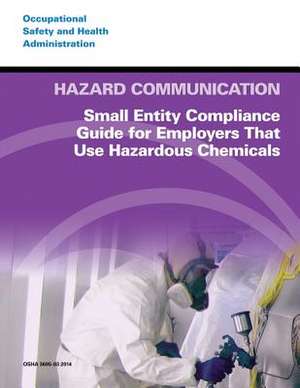Hazard Communication
Autor U. S. Department of Labor, Occupational Safety and Administrationen Limba Engleză Paperback
Preț: 95.07 lei
Nou
Puncte Express: 143
Preț estimativ în valută:
18.19€ • 19.08$ • 15.14£
18.19€ • 19.08$ • 15.14£
Carte disponibilă
Livrare economică 11-25 martie
Preluare comenzi: 021 569.72.76
Specificații
ISBN-13: 9781497376076
ISBN-10: 1497376076
Pagini: 48
Dimensiuni: 216 x 279 x 3 mm
Greutate: 0.14 kg
Editura: CREATESPACE
ISBN-10: 1497376076
Pagini: 48
Dimensiuni: 216 x 279 x 3 mm
Greutate: 0.14 kg
Editura: CREATESPACE
